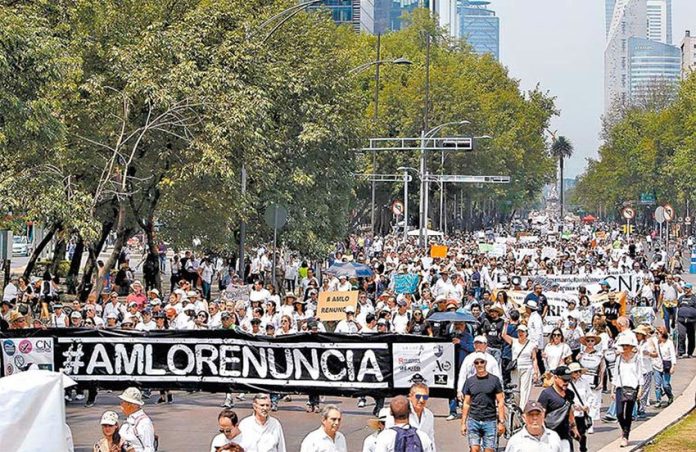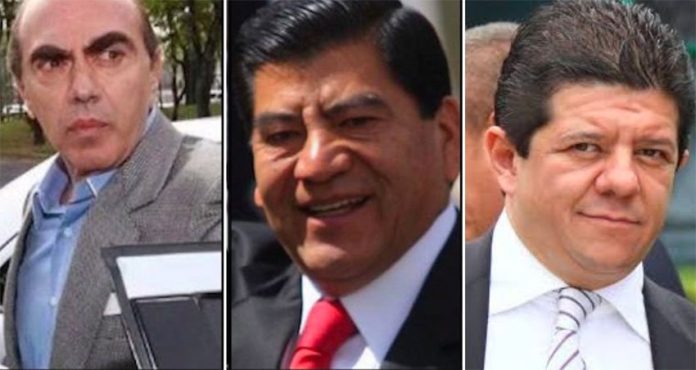More than 20,000 people took to the streets in 19 cities yesterday to protest against the federal government and demand the resignation of President López Obrador.
The largest protest took place in Mexico City where about 15,000 people marched along the Paseo de la Reforma boulevard holding signs on which they had written “AMLO out!” and “Wise people made a mistake with you,” among other anti-government messages.
Dubbed “La Marcha del Silencio” (The Silence March), some protesters covered their mouths with masking tape emblazoned with a clear message: “AMLO resign.”
The government’s cancelation of the new Mexico City international airport, insecurity, the staging of legally questionable public consultations, the dismissal of bureaucrats and López Obrador’s use of divisive language. He frequently describes his “adversaries” as fifí (elitist) or conservatives – were the protesters’ main complaints.
Plans to build the Maya Train on the Yucatán peninsula and a new oil refinery on the Gulf coast in Tabasco were also criticized.
Toluca, Saltillo, Veracruz, Mérida, Puebla, Chihuahua, Monterrey, Guadalajara, Morelia and Tijuana were among the other cities that saw protests, which were organized on social media by a group called Chalecos México (Mexico Vests).
Homero Velázquez, one of the group’s founders, told the news website Animal Político that Chalecos México has been organizing protests against López Obrador since before he was sworn in as president last December, and that its opposition to the new government initially focused on the decision to cancel the partially-built airport project at Texcoco, México state.
The group’s leaders and most of the people who participated in yesterday’s protests said they are not members of any political party but rather ordinary Mexicans who are concerned about the direction in which the five-month-old government is taking the country.
However, not all the protesters could claim to be everyday Mexicans.
Former president Vicente Fox, a frequent critic of the president, led a march of about 1,000 people in León, Guanajuato, while carrying a sign that called on the government to use “better criteria” in its decision making.
Former tourism secretary Enrique de la Madrid also took part in the protests although he said that he attended as a private citizen and not as a representative of the Institutional Revolutionary Party (PRI), which lost power at last year’s elections.
“It’s a very delicate moment in which freedoms are being lost,” de la Madrid said without explaining what those freedoms were.
Former president Felipe Calderón, who has clashed repeatedly with López Obrador, praised Mexicans who participated in yesterday’s protests in a Twitter post in which he also invited them to join a new political movement in which he is involved.
At his morning press conference today, López Obrador was unperturbed about the protests and reiterated that people have the right to freely express their opposition to the government.
“They have the complete right to demonstrate. I’m even pleased that this protest was organized and hopefully those who are not in favor of the government will continue to protest with freedom,” he said.
“This is logical, it’s natural. When we won we said that there was going to be a change of regime, that we were going to put an end to corruption, privileges, luxuries of government; that we were going to listen to everyone, respect everyone; and that we were going to give preference to the dispossessed . . . for the good of all, the poor come first,” López Obrador continued.
“It’s new politics, a transformation and this of course doesn’t please [some people] . . .”
Source: Milenio (sp), Animal Político (sp), El Financiero (sp)











